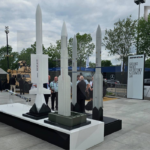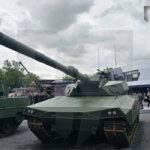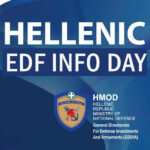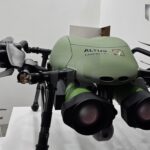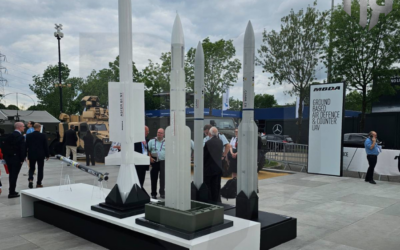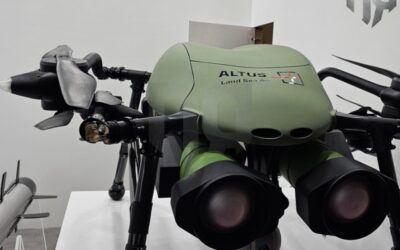With such a large number of interested attendees at MBDA’s pavilion at the Eurosatory 2024 Defence exhibition, the stand reminded of an…

QinetiQ’s Banshee Jet 80+ UAV has been reportedly downed by a Russian electronic warfare system.
According to the company, the British-made Unmanned Aerial Vehicle (UAV) is intended for use as an aerial target and has a range of over 100 km. The Russians claim that the UAV was carrying a 7 kg explosive warhead and landed in the Novoazovsky district of the Donetsk region.
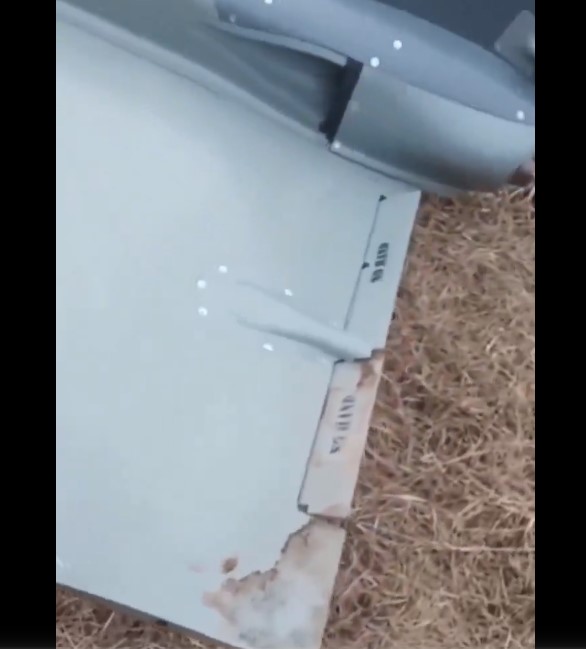
⚡️🇬🇧/🇺🇦British-made QinetiQ Banshee Jet 80+ UAV shot down by 🇷🇺Russian electronic warfare. The drone is intended for use as an aerial target and has a range of over 100 km. The Russians claim that the UAV was carrying a 7 kg explosive warhead and was landed in the Novoazovsky… pic.twitter.com/HQy5aI4kNY
— 🇺🇦Ukrainian Front (@front_ukrainian) February 19, 2024
Deployed from the successful Banshee aerial target, this twin-jet engine-powered version was developed using knowledge and experience gained whilst operating the single-jet engine variant which entered service in 2010.
The original version is fitted with twin 40 kg thrust gas turbine engines giving a total of 80 kg of static thrust. This offers an increase in the maximum straight and level airspeed of up to 200 m/s. The use of an auxiliary fuel tank ensures that endurance is similar to that of the single-engine version with a typical mission time exceeding 45 minutes.
When fitted with the Hot Nose patent, the target provides a forward and side-looking IR source with output in Bands I, II and III, whilst the jet engines provide a realistic rearward-looking Infrared (IR) signature.
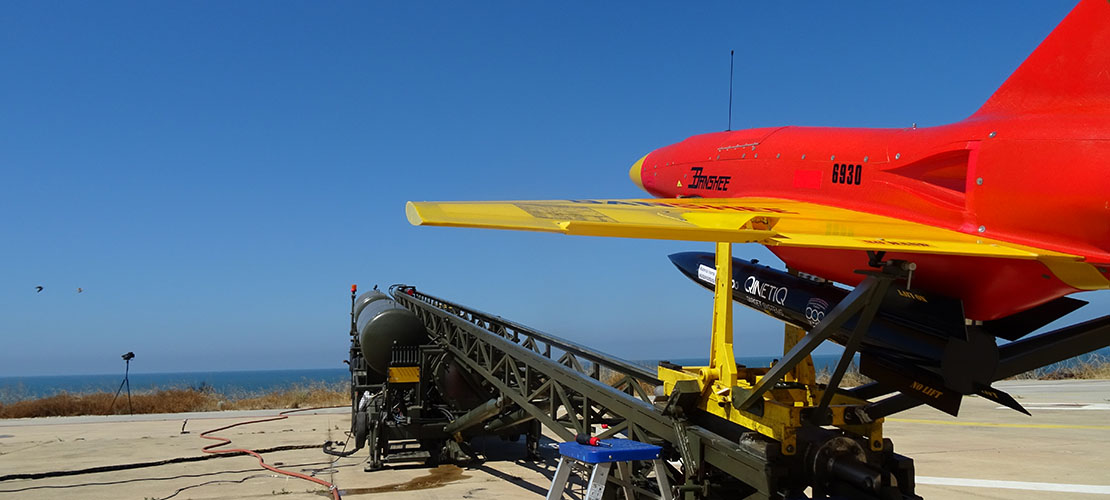
All other well-proven augmentation devices traditionally available to Banshee can be fitted to this latest twin-jet engine derivative.
With QinetiQ’s CASPA Avionics onboard, the Banshee Jet 80+ has enhanced stabilisation with the added benefit of digital autopilot. Other features, such as integrated GPS, digital telemetry systems and parachute ejection recovery, ensure effective navigation through various customer training simulations.
Versatile and equipped with a range of optional payloads, the Banshee Jet 80+ can carry the Rattler Supersonic Target as an ejectable payload, further enhancing the customisation options and ability to meet customer requirements worldwide.
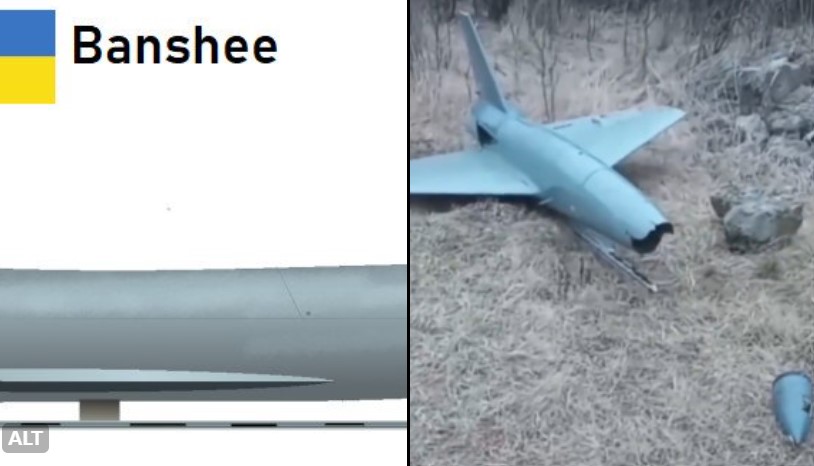
***BREAKING***
Here-> https://t.co/6vV0mwuZPuFirst Sighting Of British Banshee Jet-80 Jet-Powered Drone In Ukraine. One example crashed behind Russian lines.
Notably this type of drone is also used by Royal Navy pic.twitter.com/Cu0ACsKMWe
— H I Sutton (@CovertShores) February 19, 2024
In particular, this type of drone is also used by the Royal Navy, whose objective is to use it as a target against simulated incoming missiles and not as a weapon system.
QinetiQ was formed in July 2001, when the Ministry of Defence (MOD) split its Defence Evaluation and Research Agency (DERA) in two. The smaller portion of DERA was rebranded Dstl (Defence Science & Technology Laboratory).
The larger part of DERA, including most of the non-nuclear testing and evaluation establishments, was renamed QinetiQ and prepared for privatisation. QinetiQ became a public-private partnership in 2002 with the purchase of a stake by a US-based private equity company, the Carlyle Group.
In 2003, QinetiQ signed a 25-year long-term partnering agreement (LTPA) under which it provides the UK Ministry of Defence with innovative and realistic test and evaluation of military and civil platforms, systems, weapons and components on land, sea and air.
Also read: Ukraine | Troops receive 3D-printed UAVs from Germany
READ MORE
KNDS | Showcases full range of LEOPARD battle tanks at EUROSATORY
KNDS continues to expand its technological advantage in the field of main battle tank development, as we have witnessed at the Defence and…
THEON SENSORS | Distinguishing appearance at EUROSATORY 2024 with new range of products
THEON SENSORS attended the International Defence and Security Exhibition EUROSATORY 2024 as an ambassador of Greek innovation…
EUROSATORY 2024 | Missile Artillery Solutions from MBDA
With such a large number of interested attendees at MBDA’s pavilion at the Eurosatory 2024 Defence exhibition, the stand reminded of an…
KNDS | Showcases full range of LEOPARD battle tanks at EUROSATORY
KNDS continues to expand its technological advantage in the field of main battle tank development, as we have witnessed at the Defence and…
THEON SENSORS | Distinguishing appearance at EUROSATORY 2024 with new range of products
THEON SENSORS attended the International Defence and Security Exhibition EUROSATORY 2024 as an ambassador of Greek innovation…
Ministry of Defence | Organization of Hellenic EDF Info Day
A Conference entitled “EDF Info Day” is organized in the Amphitheater of the National Gallery on Tuesday, July 9 from 09:00 to 17:00.
ALTUS LSA | Participates in EUROSATORY 2024 with KERVEROS in the foreground
The participation of ALTUS LSA in EUROSATORY 2024 is among the Greek participations of operational significance.
Freddy Beleris | Ιn jail until October
The elected mayor of Heimarra and Member of the European Parliament of New Democracy will remain in prison until October…







